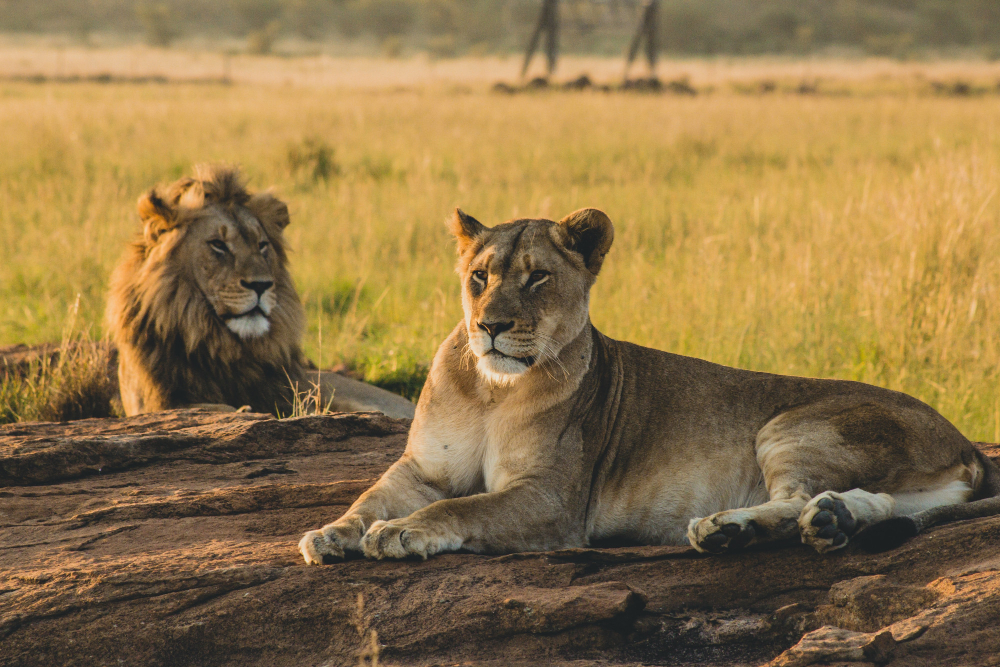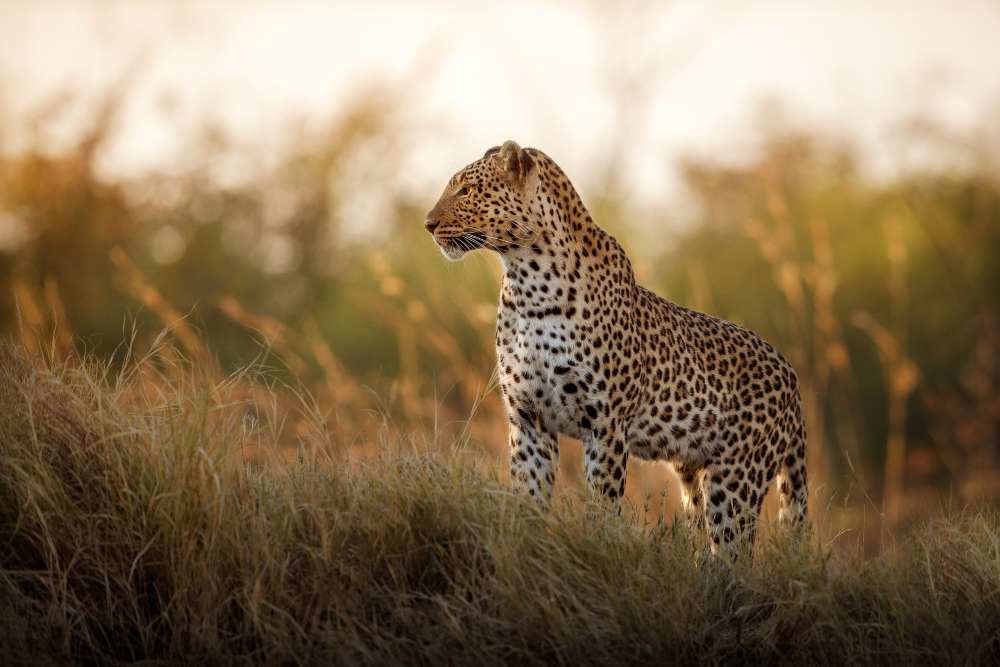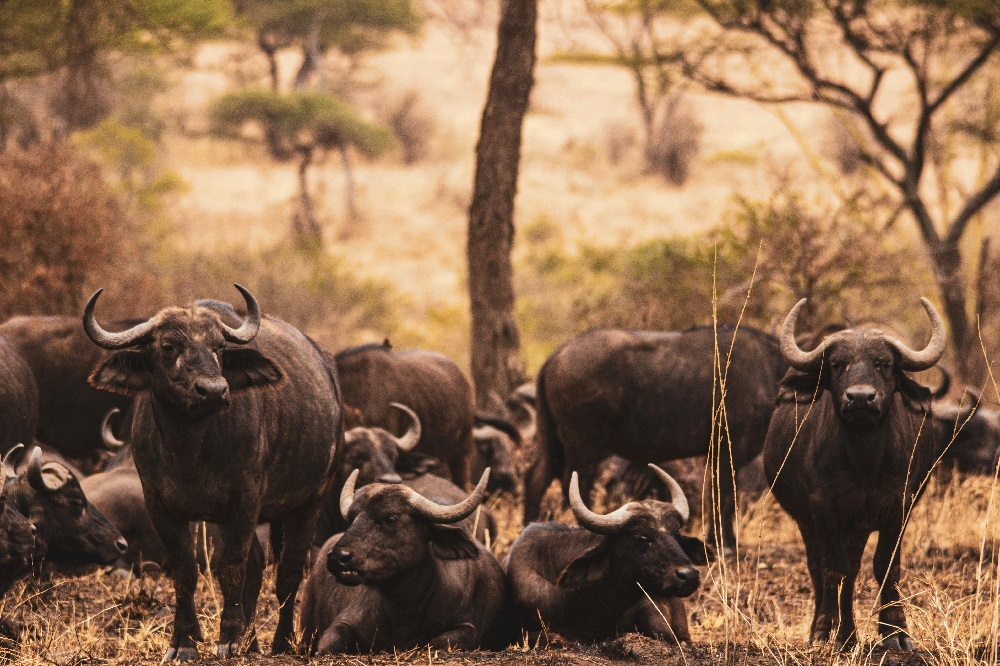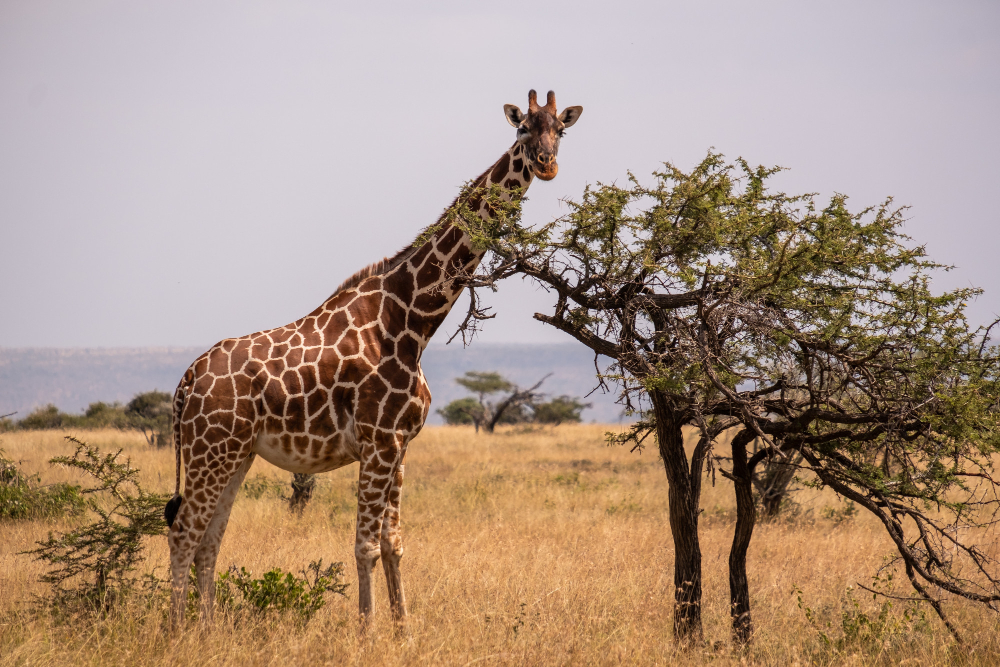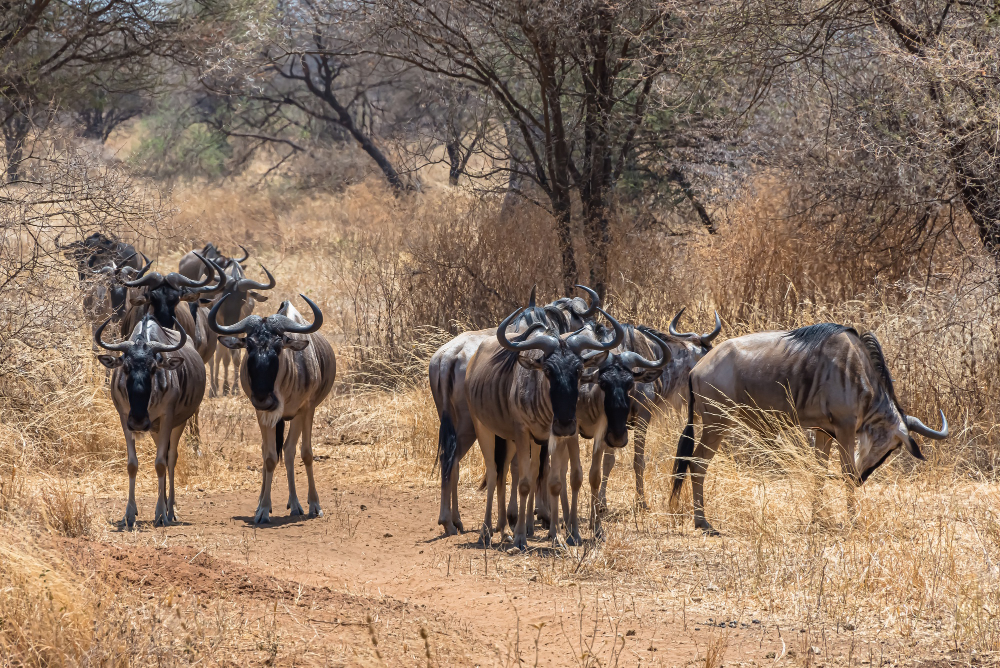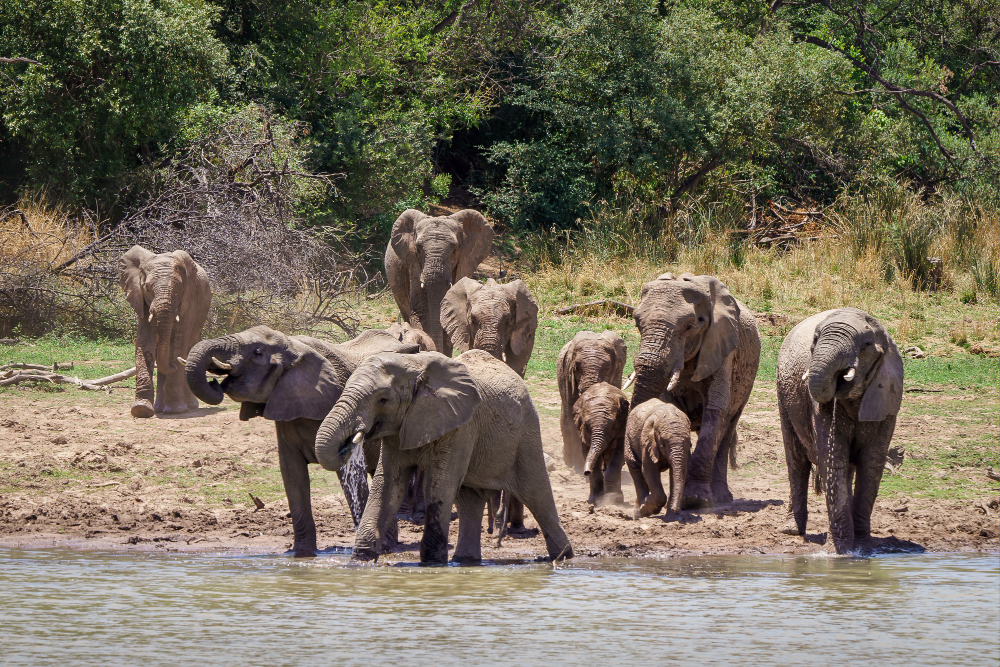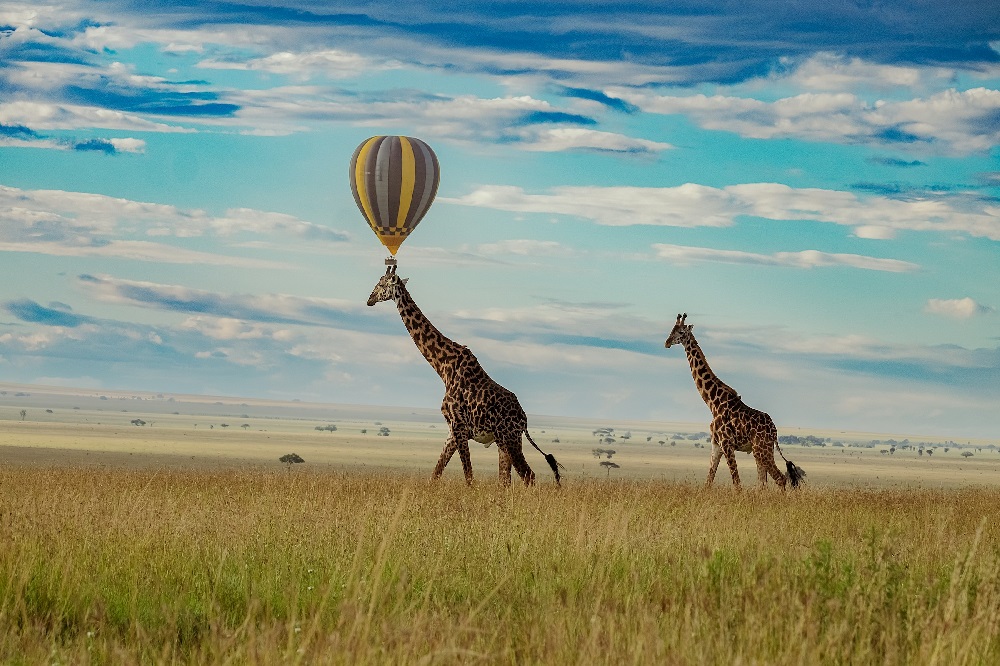2-Week Kenya Safari Itinerary & Costs
It should come as no surprise that one of the most sought-after safari locations in Africa is Kenya. From the fauna and scenery to the culture, this country is diverse.
Big cats hunting on the expansive grasslands of the Maasai Mara or massive herds of elephants marching over Amboseli while Mount Kilimanjaro looms in the background are sights I will never forget.
Making time for rest in your itinerary will help you make the most of every minute because I have personally traveled throughout Kenya and know how draining the lengthy journeys and distances can be.
Why go on a Safari in Kenya
With 23 national parks and game reserves, Kenya is frequently regarded as one of Africa’s top safari destinations because of the vast number of animals that call it home.
The nation also boasts incredibly varied terrain, ranging from towering mountains to expansive savannahs, which make it the perfect place to see some of the most amazing species on the planet.
Along with hundreds of other animal and bird species, the Maasai Mara, Kenya’s most cherished national reserve, is home to sizable populations of lions, elephants, African buffalo, rhinos, and cheetahs.
Tanzania’s Serengeti National Park and Kenya’s Masai Mara share the same ecology.
Huge herds of elephants, referred to as “Big Tuskers,” and expansive vistas of Tanzania’s Mount Kilimanjaro are the main draws of Amboseli National Park.
While Lake Nakuru is renowned for being a bird lover’s dream, Tsavo is Kenya’s largest park and one of the largest game sanctuaries in the world.
In addition to the breathtaking beauty and wildlife, Kenya is also incredibly accessible—at least in terms of travel time. You can fly directly to Kenya’s capital from cities all over North America and Africa because Nairobi is one of the continent’s busiest airports.
Nairobi Airport also acts as a regional transportation hub, making it simple to schedule a subsequent flight to the Indian Ocean or another African location.
How to Book Your Kenya Safari
At first, organizing a safari vacation may seem very difficult. Given the distances traveled, the untamed terrain, and the overwhelming number of options available, it’s normal to feel overwhelmed when making travel plans.
The first stage is deciding between the two primary safari options: a guided safari tour, where everything is planned for you, or a self-driving safari, where you rent a car and make your own travel and lodging arrangements.
Bookings for a guided safari can be made directly with the lodging or through a local or international tour operator. Below, we’ll discuss the benefits and drawbacks of each.
Additionally, you have the option of a group or private tour. I advise scheduling a private safari unless you are traveling on a limited budget.
Option 1: Self-Drive Safari
Visitors are permitted to drive around a few of Kenya’s national parks and wildlife reserves.
Self-drive safaris appear to be a fantastic way to save money and provide a great deal of flexibility. All you have to do is rent a car, purchase your park admission, and go exploring, right?
Sort of. Even though self-driving cars might seem like a fantastic idea, there are a few advantages and disadvantages to consider before making your choice.
Your ability to identify animals is the first and most crucial item you should consider. There, be truthful with yourself.
When it comes to identifying animals, a local guide can be really helpful. You can find animals with the assistance of guides that you otherwise would not have seen. You have a far better chance of seeing specific animals since they have a network of other guides who can tell them where they are.
Your safari budget is the second thing to think about. On safari, driving yourself could seem like a terrific way to save money, but when you sum everything up, the savings are not as large as you might first believe.
In contrast, Tsavo costs $61 during the high season and $41 during the low season, whereas Amboseli charges $118 during the hot season and $94 during the low season. These costs are per person, per day, and inclusive of tax.
If you intend to visit several parks during your two-week Kenya safari (which I strongly recommend), these expenses quickly mount up.
Whether you have a safari reservation with a travel operator or are going on a self-drive safari, the costs are the same. When calculating the total cost of a self-drive safari, keep in mind that the park fees are typically included in the tour price offered by the majority of tour companies.
Logistics-wise, you’ll need to rent a 4×4. Gas and car rentals can get really expensive. Along with being reasonably adept at navigation to avoid getting lost in the parks, you’ll also need to grasp the fundamentals of car maintenance in case you have any problems while on safari.
Option 2: Local Tour Operator
Booking through a local tour operator is, in my opinion, a no-brainer after attempting self-drive safaris and making reservations through both domestic and foreign agencies!
The people on the ground are local tour providers. With a local guide, you’ll see a lot more creatures than you would on your own, and the best ones are intimately familiar with the areas they work in and can handle even the slightest nuances!
Additionally, their cost is not significantly higher than that of a do-it-yourself self-drive safari. Except for your driver’s guide, prices are essentially the same.
However, depending on the local tour operator you choose, your safari experience can vary significantly, so it’s important to do your homework and make an informed decision.
To see what other people have experienced, I advise reading as many guest reviews as you can on Google and Tripadvisor. This is among the best methods to determine if you want to make a reservation with a particular supplier.
As an alternative, you may hire a seasoned travel planner like me to help you go through the various tour alternatives and select the one that’s ideal for you
Option 3: International Travel Agents
Using an overseas travel agency is an additional choice if you’re not sure that making your reservation through a local operator is the best course of action.
These foreign agents will take care of any problems that come up before, during, and after your trip and can assist you in booking your complete safari from beginning to end.
All of this additional assistance, though, can have a price. In terms of dependability and customer service, making a reservation through an international travel agency can seem like the “safest” choice, but it’s crucial to understand that the majority of foreign tour operators are merely acting as middlemen on safari excursions.
International agents typically mark up the price and then sell it to you after working with local tour operators. The only significant variation is the cost of your safari; otherwise, the final experience is typically the same. So, if you’re on a tight budget, keep that in mind!
International tour operators have the advantage of typically being “bonded,” which theoretically protects your money in the event that they fail before your trip.
Option 4: Fly-In Hotel Safaris
Fly-in safaris are an additional choice if you are time-constrained and have a large budget.
Using light planes, these upscale safaris take visitors throughout a region or nation. Even if you only have a little holiday, this enables you to see a huge area.
Additionally, since you won’t have to drive between parks, you’ll have more time to spend in each reserve. Following your flight, you will drive 4X4s around the parks, enjoying an experience akin to that of a typical driving safari. Be aware, though, that hotel game drives are usually not private, so you will have to share your car with other visitors and vie for the finest views.
For those who wish to pack as much as they can into their trip, fly-in safaris are a good choice. But it makes sense that they are among the priciest excursions available; the cost of the safari package is significantly increased by all those quick flights!
How Much Does a Kenya Safari Cost?
Kenya is no longer regarded as a “budget safari” location, despite the fact that safari prices can vary greatly based on your spending limit. Due to an increase in safari park fees, Kenya is now on level with Tanzania or Uganda in terms of expense as of July 1, 2024.
The approximate cost of a private Kenyan safari is $300 per person per day. This covers lodging, admission to the park, all meals, transportation, and all activities.
At about $190 per person per day, shared group safaris are less expensive. Basic camping accommodations are typically included in shared safari expenses. Because some shared campgrounds are ill-maintained and have dubious amenities, carefully read evaluations. In general, safari costs decrease with the size of your group.
Best Time to Go on Safari in Kenya
In general, the dry season is the ideal time of year to go on safari in any country. Since animals like to congregate near watering holes during this time, you have the best chance of seeing them. Additionally, the foliage is thinner, making it simpler to find the animals while they are hiding.
Thus, late December to early February and late June to early September are the ideal times to travel to Kenya.
It’s also important to remember that the Great Migration typically occurs between July and October. You have the opportunity to witness this amazing spectacle as thousands of animals travel around the terrain in unison if you visit during these months. April and May are often the wettest months in Kenya, so you should definitely stay away from them. Not only will you have less opportunities to see animals during the day, but there will also be fewer places to sleep at night because many safari lodges and tented camps close during this time.
How Long to Spend in Kenya
If you want to take advantage of everything that this stunning country has to offer, 14 days is really the perfect length of time to visit Kenya.
You’ll have enough time in two weeks to see all the main attractions as well as a few lesser-known treasures, and you’ll still have time to relax after making the long drive between locations. Additionally, you have more time to see possible wildlife.
However, I would advise staying in Kenya for at least seven to ten days. On my blog, I’ve also included itineraries for three or five days in Kenya. Additionally, you might want to mix Kenya with other adjacent locations, like Tanzania.
Kenya Safari Logistics
After deciding on your Kenya safari itinerary, it’s time to determine which logistics you will need to manage yourself. I’ll walk you through these below.
Fortunately, there won’t be as much left for you to plan if you are booking with a local tour operator, who will probably handle the accommodation, transportation, and meals.
Visa
Good news! Visas are no longer required for travel to Kenya as of January 2024. To enter this stunning nation, you must apply for an Electronic Travel Authorization (eTA).
Vaccination
All visitors arriving from nations where yellow fever is endemic are required to get vaccinated, according to Kenyan immigration. If you are considering a multi-country journey, it is imperative that you are vaccinated and that you have your vaccination certificate with you. This includes neighboring countries like Tanzania.
However, since there is a chance of contracting yellow fever in Kenya, we strongly advise getting vaccinated even if you are not traveling from a nation where the disease is present.
Medications
Malaria, a dangerous disease spread by mosquitoes, is a problem in Kenya.
Since there is currently no vaccine to prevent malaria, it is recommended that you take anti-malarial medicine when visiting Kenya. I would advise discussing which drug is best for you with a medical practitioner.
2-Week Kenya Safari Overview
The ideal two-week Kenya safari schedule is provided below. This itinerary takes you to several of Kenya’s most popular national parks and reserves, where you may almost certainly see some amazing wildlife.
Day-by-Day Breakdown of the Ultimate 2-Week Kenya Safari Itinerary
Day 1: Nairobi
Greetings from Nairobi! It’s ideal to acquaint yourself with your new surroundings on your first day in Kenya.
Nairobi serves as both Kenya’s capital and the entry point to some of the greatest natural areas on earth. Since there are a lot of travel companies established here, airport pickup is probably included in your trip package.
You can plan some activities or just go to the hotel and unwind, depending on when your flight comes (and how exhausted you will be upon arrival!). Although there is a lot to do in Nairobi, we wouldn’t blame you if you would rather sleep well in order to be ready for the exciting two weeks that are ahead!
Day 2: Nairobi to Maasai Mara
You will begin traveling westward from Nairobi in the direction of the Masai Mara, which is regarded as one of Kenya’s most well-known national parks.
You’ll be treated to breath-taking views of the Rift Valley during the drive. You can pause at the Great Rift Valley Viewpoint, which is a great place to stretch your legs and take pictures, after around 1.5 to 2 hours of driving.
Because of the continuous geological movements that continue to affect its terrain, this is the world’s greatest valley and is always changing.
At Narok, you’ll probably make a second, brief stop to refuel. The nearest big town to the Masai Mara is Narok, which is roughly three and a half hours from Nairobi.
You can have a satisfying and tasty supper at a park lodge if you’re hungry after arriving in Masai Mara. Then, you can visit the Maasai tribe in the afternoon to wrap up your day.
I strongly advise starting early because the drive from Nairobi to the Talek Gate, the entrance to the Masai Mara reserve, takes almost six hours. You may spend more time with the intriguing Maasai and avoid having to drive in the dark thanks to this!
Day 3 & 4: Maasai Mara National Reserve
Make sure you’re up and at ’em when the sun rises since the animals are at their most active in the early morning, which is the ideal time of day to go on safari! Depending on how far your lodge is from the reserve gates, I advise setting your alarm for approximately 5 a.m. since the gates open at 6 a.m.
Try to remain in the park until the gates reopen at 6 p.m. if at all possible. This increases the likelihood of some memorable sightings by making the most of your time in the park.
I can assure you that it is worth the long hours spent in a safari jeep! Just before dusk, I witnessed a lion kill a wildebeest. Seeing something so strong was amazing, and I’m very happy we spent the day in the park!
If you returned to your lodge for lunch, you would have to pay the Masai Mara entrance fee again because they charge it each time you enter the park. To spend the entire day in the park, instead, pick up a packed breakfast and lunch from your lodge before you depart.
Your lodge should have no issue making the packed lunch that almost every safari traveler needs. Just be sure to inform them the night before if you have any food restrictions (vegetarian, vegan, etc.).
There is typically a good amount of food offered, even though it could be costly if you have to pay for the packed lunch separately. You’ll regret it later when you can’t hear a lion roaring over your stomach grumbling, so don’t cut corners on this one, I promise!
Your lodge will serve you another delicious lunch to cap off the day. The range of cuisine that may be prepared in the heart of the Masai Mara is just astounding!
Day 5: Naivasha
You will travel five to six hours today, traversing a range of roads from buttery smooth to full-fledged African massage. By starting early, you can avoid driving at night and make sure you reach your next destination in time for lunch and afternoon activities.
After reaching Lake Naivasha, have lunch at your resort and recover for a while before continuing with the day’s activities.
An afternoon boat ride, which offers a fresh viewpoint on the lake’s fauna, is one of the most well-liked activities here. The majority of boat tours stop at Crescent Island, where you may go on a walking safari and observe a broad range of animals, such as giraffes, gazelles, zebras, and wildebeest.
Day 6: Lake Nakuru National Park
You will drive to Lake Nakuru, which is only two hours away, after another early start. You will arrive in time for a late-morning wildlife drive in Lake Nakuru National Park.
Now that you’ve had a brief overview of the neighborhood, it’s time to settle in for lunch and make plans for the afternoon! Horseback riding and an afternoon bicycle safari are a couple of the options. If you’d rather do something a little more laid-back, you could go on another gaming drive.
Day 7: Ol Pejeta Conservancy
You can go on a wildlife drive for the remainder of the day after driving from Lake Nakuru to Ol Pejeta. You will undoubtedly want to take some pictures of the rhino population in the reserve, so be sure to keep your cameras out.
You may also see the poignant Rhino Memorial, which was constructed in remembrance of all the rhinos that have been poached, and the Equator sign while you’re in Ol Pejeta. while an alternative, take a horseback ride or observe the K9 anti-poaching squad while they practice tracking.
Day 8: Ol Pejeta Conservancy to Amboseli National Park
You may anticipate spending the entire day on the road because the drive should take eight to ten hours. During the journey, you will pass through Nairobi, so I suggest making time for a lunch break there.
You’ll probably want to get a short meal and go straight to bed as soon as you get to Amboseli!
Day 9: Amboseli National Park
Prepare yourself for a full day of Amboseli wildlife drives. Make sure to get up early today because the park gates open at 6 a.m.
To ensure you have enough time to reach the elephant crossing into the marsh, you should arrive at the gates as soon as they open. The optimum time to see large animals like lions and cheetahs is in the early morning.
Enjoy a picnic lunch atop Observation Hill in the afternoon while admiring the expansive, all-encompassing views of the park. After that, it’s off again for a safari in the afternoon.
Staying in the park for as long as possible can significantly improve your chances of seeing more animals, much like in the Masai Mara.
Day 10: Amboseli to Tsavo West National Park
You’ll travel to another of Kenya’s most cherished parks today, which is located near the Tanzanian border. You might be fortunate enough to enjoy some amazing views of Mount Kilimanjaro, despite the drive being somewhat long.
You will arrive in time for lunch and an afternoon wildlife drive after crossing the Chyulu Gate into the Tsavo West from Amboseli.
Day 11: Tsavo West National Park
For your final game drive in Kenya, get up and shine. After leaving early for a wildlife drive in the morning, you will return to the lodge for a hearty lunch and spend the afternoon unwinding.
Day 12: Tsavo West to Diani Beach
You will travel from Tsavo West to Diani, which is situated at the southeast tip of Kenya, in around five hours.
You can spend the afternoon in Diani getting back in touch with your inner beach bum, snorkeling in the pristine waters, or just enjoying a few cocktails at one of the beach bars if you depart early enough.
You’ve earned it, so take some time to appreciate the relaxed charm of this classic beach town. After following this plan, you probably need a break.
As an alternative, if you’re more of a city dweller, you could always visit Mombasa, the second-biggest city in Kenya.
As the capital of Kenya during the British colonization and a major trading hub for the Indian Ocean trade, Mombasa is also a fascinating place for history buffs to visit. Relics of this lengthy past can be found everywhere.
Day 13: Diani Beach
Diani is the ideal location to round up a trip to Kenya. The ideal setting for your final full day is the shimmering Indian Ocean, the white sand, and the laid-back atmosphere.
Things to do in Diani
- Unwind on the shore
It’s difficult to resist Diani’s lovely white sand, and I wouldn’t blame you if you chose to sunbathe all day.2. Go scuba diving
Diani is fortunate to have coral reefs all around it, and the Indian Ocean’s warm water makes snorkeling there an alluring activity. Nomad Beach, which is directly in front of Nomad Beach Bar & Restaurant, is the greatest place to go snorkeling.3. Dine at One of the Delectable Restaurants in Diani
You could be craving a few delectable meals after consuming picnic lunches from the safari hotels for the past ten days! Diani provides a wide variety of dining alternatives for hungry tourists, from upscale seafood restaurants to laid-back cafes
You can’t go wrong with a visit to Nomad Beach Bar & Restaurant, which provides expansive views of the beach and delicious local and foreign cuisine. This location is a Diani institution and is adored by both locals and visitors.
Try Ali Barbour’s Cave Restaurant, which is located in the center of a natural cave, if you’re searching for something different!
4. The National Reserve of Shimba Hills
Visit Shimba Hills National Reserve if you aren’t quite ready to bid Africa’s wildlife farewell. One of the biggest coastal forests in East Africa, it is abundant in both plants and animals. During game drives in the reserve, visitors can see waterbuck, giraffes, elephants, hyenas, leopards, and more.
- The Center for Colobus Conservation
The goal of this nonprofit organization is to preserve the endangered Colobus monkey. Visitors can witness colobus monkeys, vervets, sykes, and baboons on the center’s guided primate eco-tours.
Day 14: Diani Beach to Nairobi
You can take a one-hour flight or a full-day drive back to Nairobi to wrap up your journey.
If you choose to fly, you can either take a morning flight and see Nairobi in the afternoon, or you can spend the morning lounging in Diani before your afternoon flight.
You would have to travel back up the Nairobi-Mombasa Highway towards Chyulu Hills National Park if you choose to drive back to Nairobi.
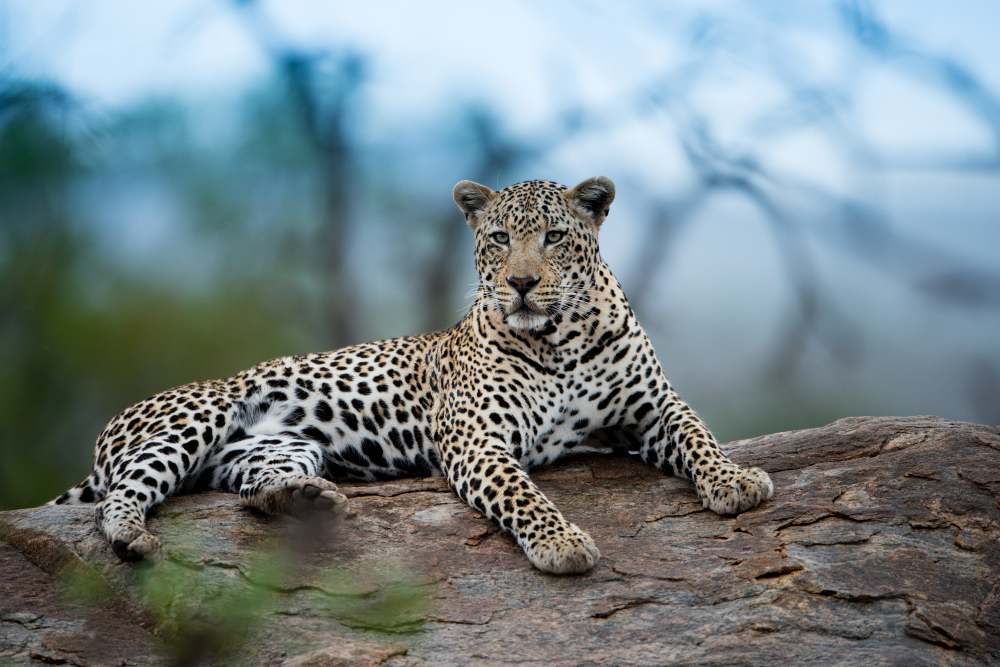
On a paved roadway, the trip from Mombasa to Nairobi is essentially a straight shot, making it a fairly easy but lengthy journey. As always, get out of there as early as you can to avoid driving at night.
Final Thoughts
To be honest, when it comes to having an amazing African safari, Kenya is unmatched. There are a ton of amazing national parks and reserves throughout the nation. It should come as no surprise that some of my favorite safari experiences have taken place in Kenya, with so much amazing wildlife to witness!
During a 14-day safari, you can see several of Kenya’s top attractions. You can have some amazing safari experiences just by visiting the Masai Mara and Amboseli, but you can really understand the extent of the wildlife here when you also include Ol Pejeta and the two lakes.
And there isn’t a better way to wrap out a trip to Kenya than to explore Tsavo West before continuing on to the breathtaking beaches of Diani! This seaside region not only lets you see a different aspect of the nation, but it also lets you unwind in paradise and end your journey on a positive note!

